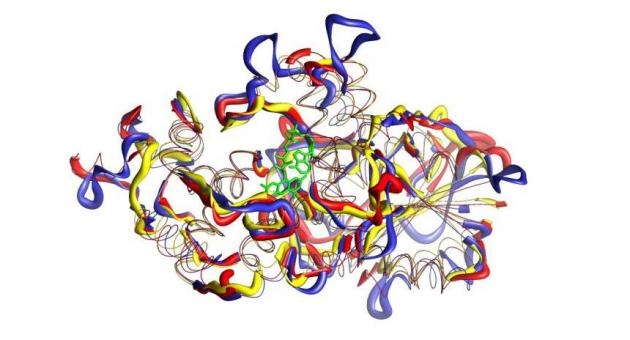
Exposure to ultraviolet (UV) radiation not absorbed by the ozone layer can damage DNA. But an enzyme called DNA photolyase can repair the damage through the absorption of blue light.
Robert Stanley, associate professor of chemistry in Temple’s College of Science and Technology, has been studying the mechanisms behind this light-driven DNA repair process for the past 16 years. Now, through a four-year, $1.07 million grant from NASA, Stanley and his colleagues will explore how this process occurs at both extreme high and low temperatures.
Photolyase is a protein that contains a vitamin B2 (riboflavin) molecule as its active agent. It uses the blue light to drive an ultrafast electron transfer reaction between the protein and the bound DNA lesion, which repairs the damaged DNA in less than three nanoseconds. Stanley and other researchers around the world have discovered the repair mechanism for so-called mesophillic photolyases, which operate at or near human body temperature.
“Nature has to adapt to extremes in temperature, both hot and cold, so we want to know how DNA is damaged and repaired at both high and low temperatures,” he said. “Is DNA more easily damaged at one temperature extreme or the other?”
Stanley said the research will focus on what changes nature makes in the photolyase protein to allow it to function properly in extreme environments since the B2 molecule is thermally unstable.
“We don’t know what evolution does to optimize the DNA repair protein at very low temperatures compared to very high temperatures,” he said. “The photo electron transfer is very sensitive to temperature, so at a very low temperature it may happen very slowly, while at a very high temperature it may take place much more quickly. We just don’t know right now.”
Stanley said NASA officials are intrigued by this research because they are very interested in understanding the extremes under which organisms can exist not only on earth, but other planets as well.
In addition to the work being conducted at Temple, the NASA grant will also fund collaborations between Stanley and researchers at Montclair State University and Duke University on measuring the thermodynamics of the process and on developing detailed computational modeling of the DNA repair process as well as computational predictions on whether DNA gets damaged at higher rates in lower or higher temperatures.